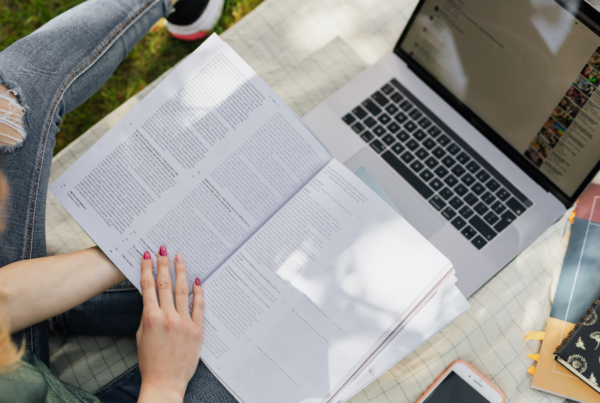 By Eric Lynne
By Eric Lynne
I remember watching a friend in college “study” before a big psychology test. He sat in a comfy chair with the course’s textbook open on his lap, the one we’d been reading out of all semester long. I watched as he gazed at the text before him, sort of reading but not really reading it. (He would have said that he was “reviewing it.”) When he’d had his fill of one page, he’d flip to the next one, his eyes idly roaming to and fro over the spread. Less than an hour later, he was asleep in the chair, the textbook still flipped open to the same chapter. He seemed to think that by merely spending time with the textbook he would come to know its secrets.
He did not do well on that test.
To my friend’s credit, he had at least looked at the right stuff. Our psychology professor had told us that all of the answers to the test could be found within the bindings of that textbook (which the professor had written). What my friend did not understand, though, is that studying is not a passive endeavor. Effective studying is an active process.
While revisiting the textbook was a good place to start, he didn’t do the work of encoding that information, that is, memorizing it so he could actually access and use it in the future. A select few savants may be able to encode a textbook’s worth of content with a simple re-read like the one my friend had performed, but most of us have to do something new with that information, something different. After all, if it didn’t get in his noggin the first time he read it, a second skim through the text certainly wasn’t going to make the information suddenly stick.
Instead of an uninspired “review” of the textbook, my friend would have benefitted from employing an effective encoding strategy — a method for engaging with the material in a different way that helps commit it to memory.
This psych test required us to memorize a whole host of experiments, studies, and theories and the researchers who formed them. It required us to be able to differentiate between the psychologists and the schools of thought to which they belonged. With so much information to juggle, distilling it down through the use of some of the encoding strategies below would have helped.
- Mnemonic Devices
These are simple memory tricks and techniques to help recall information. Mnemonic devices are especially helpful when trying to memorize related information, such as a list or process. Creating an acronym out of the information you need to memorize is one of the most common mnemonic strategies. For example, the acronym PEMDAS can be used for memorizing the order of operations (that is: parenthesis, exponents, multiplication, division, addition, and subtraction). Another common mnemonic device is an acrostic, which is a memorable phrase created from the beginning letters of the list of items. For example, the acrostic “Please Excuse My Dear Aunt Sally” can also be used to remember the order of operations. Perhaps my friend could have come up with a memorable acronym or acrostic to recall all of the behavioral psychologists in preparation for the test. - Graphic Organizers
Graphic organizers are really useful encoding devices. They help us reorganize information into a more palatable, memorable way. A timeline, for example, can help students literally visualize the order in which events happened (especially helpful in history classes!). T-charts are useful when needing to make a simple analysis, such as the pros and cons of an idea or the causes and effects of an action. A venn diagram can be a great way to compare and contrast two or three different things or ideas. I think my friend might have found it useful to create a venn diagram that differentiates the cognitive and humanistic schools of psychology. - Flashcards
Faithful old flashcards! When needing to memorize a list of specific terms, there’s hardly a better encoding device. While website tools such as Quizlet work for some people, I find great value in creating real flashcards by hand. Not only does writing out the terms and definitions help encode the information, you can also get more creative. I will often encourage students to draw an icon or figure to go along with the definition or term to help encode that information. I know there were bolded terms throughout that psychology textbook that could have been memorized with some flashcards. - Cheat Sheets Perhaps my favorite form of encoding is the cheat sheet. This is how it works: imagine the teacher has given you the use of a single sheet of paper that can be brought with you on test day. Most of the time, this amount of room will not be enough to provide all of the information needed to ace the test. However, it does focus one’s attention and efforts on what information is needed most or still requires the most work. By creating a cheat sheet, in essence you’ve created your own personal study guide. Once created, you can do practice tests and problems until you feel like you don’t need the cheat sheet anymore. This certainly would have helped my friend focus on what’s most important.
Committing things to memory takes commitment — it takes effort. With a mix of the strategies above and perhaps some of your own, you should be able to do more than “review” for finals; you should be able to learn and memorize the necessary information to actually be prepared for finals.





